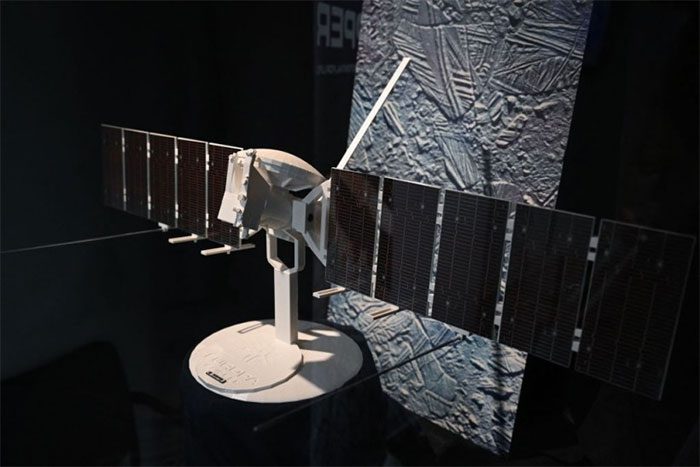On March 27, the National Aeronautics and Space Administration (NASA) announced that the Europa Clipper spacecraft has successfully passed a series of rigorous tests at the Jet Propulsion Laboratory (JPL).
According to the plan, in less than six months, NASA will launch Europa Clipper on a journey of 2.6 billion kilometers to Europa, one of Jupiter’s moons.

Model of the Europa Clipper spacecraft at NASA’s laboratory in California, USA on April 11, 2023. (Photo: AFP/TTXVN)
According to NASA, the journey of the Europa Clipper will face numerous challenges, including severe vibrations during the rocket launch, as well as the extreme hot and cold environments of space and the intense radiation from Jupiter.
The good news is that Europa Clipper has successfully passed a series of tests simulating the harsh conditions it will encounter throughout its journey.
It is expected that by the end of this spring, Europa Clipper will be transported to NASA’s Kennedy Space Center in Florida. The team of engineers and technicians will carry out the final preparations. NASA plans to launch Europa Clipper on October 10.
After being launched, the spacecraft will head towards Mars, and in December 2025, it will reach a position close enough to Mars to leverage the planet’s gravitational pull to gain additional momentum. Europa Clipper is expected to arrive at Jupiter in 2030.
NASA states that the primary mission of Europa Clipper is to explore Jupiter’s moon Europa to identify locations that may support life beneath its icy surface.
According to NASA, the mission’s objectives include studying the thickness of Europa’s icy crust, the interaction between the surface and the ocean, as well as the moon’s composition and geology.




















































